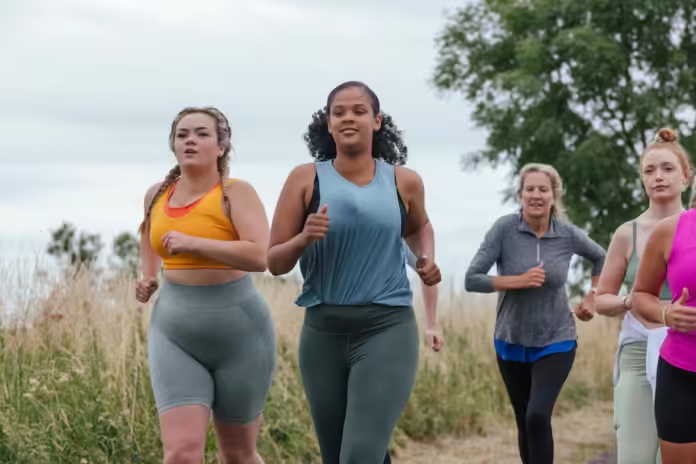 The study found women tended to use an ankle-dominant strategy for landing when they were bare-breasted or wearing minimal breast support. But this strategy can lead to knee injuries because it puts more strain on smaller muscles.
The study found women tended to use an ankle-dominant strategy for landing when they were bare-breasted or wearing minimal breast support. But this strategy can lead to knee injuries because it puts more strain on smaller muscles.
But when they wore a supportive bra, the women used a more hip-dominant strategy, which puts less stress on the ACL.
Dr. Powell says the switch to hip-dominant landings occurs when breast support is increased as the trunk moves less, and in turn, the pelvis is easier to control.
Breasts move up and down and side-to-side during exercise. During an hour-long run they bounce in a figure-eight pattern around 10,000 times.
Because breasts move in a vertical motion that’s out of time with the rest of the trunk, they can forcefully hit the chest if a bra isn’t supportive enough.
The breasts largely depend on the skin for support so not wearing the right bra can stretch the collagen fibres of the skin, leading to stretch marks and breast ptosis, or sagging.
“We’re still investigating it but we think the stretching and breaking of the collagen fibres is what causes exercise-induced breast pain,” Dr. Renwick says.
Deirdre McGhee, a leading Australian breast health researcher who was a co-author on the recent study about ACL injuries, says wearing an inadequate sports bra was the equivalent of a man not wearing underpants which support his scrotum while exercising.
“It is a no-brainer, you should be wearing a high level of breast support. Why the hell aren’t we doing it?”
Research shows the right bra can:
Reduce oxygen consumption when running, which in turn improves running economy (the distance you travel per litre of oxygen consumed),
Decrease ground reaction force i.e how hard your limbs hit the ground when you walk, run, jump,
Counteract poor posture caused by the breasts pulling the trunk forward (which can cause women to fatigue earlier when exercising),
Allow a woman to take longer strides when running,
Make you less distracted and more motivated to exercise.
When women wore highly supportive bras while completing jumping and landing tasks, many of the common risk factors associated with ACL injuries decreased.




